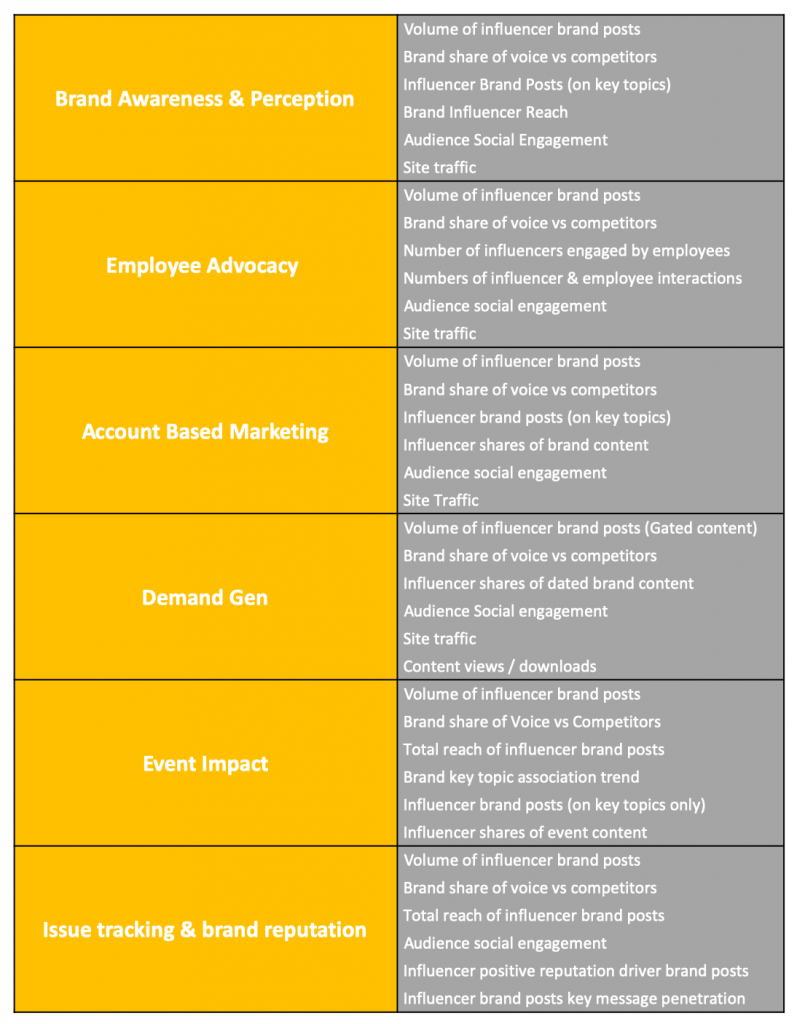Influencer marketing strategy is arguably the most important, yet neglected piece of the puzzle when it comes to a successful influencer program.
Influencer Marketing is on most marketers’ radars because of how much coverage it is getting – both positive and negative. Like every “hype”, FOMO comes into play, meaning that often, marketers feel like they should be doing it, but they’re not really sure why, or what results they can get from doing it.
Starting an influencer program without a goal and a plan to get there is like setting off on a car journey without a map or destination. Without a plan, how are you meant to know what to do, or what success looks like?
Add to this the fact that marketers also often neglect to recognise how influencer marketing can help them with their wider marketing and business objectives – an imperative step when it comes to demonstrating value and getting buy-in from senior management.
In this blog post, we’re going to take you through the 4 simple steps to help you create a complete influencer marketing strategy that is going to get you real results, quickly. So read on for a quick masterclass, or download our full Complete Guide to industry & B2B Influencer Marketing here.
Step 1 – Outlining your main objective
This is likely to differ depending on if you’re a B2B or B2C marketer and also which department you’re in.
You may even find that you have multiple objectives that fit in with the below; in this case, we recommend that you pick the one that is easiest to measure in order to be able to effectively prove success to your senior management team to secure buy-in.
- Brand Awareness & Perception – Gain visibility with your target audience through Influencers
- Employee Advocacy – Market your brand through the authentic voice of your employees
- Account Based Marketing (ABM) – Target your key accounts by combining social selling & Influencer Marketing
- Demand Gen – Drive new business by collaborating with the right Influencers
- Event Impact – Give your event major amplification on social media
- Issue Tracking & Brand Reputation – Work with Influencers to manage your brand reputation
Step 2 – Defining your KPIs
Now that you have outlined your main objective, what main KPI is most important to your business?
This enables you to effectively benchmark your current performance before you start your Influencer program, and to regularly measure your performance on a monthly, quarterly and annual basis.

Step 3 – Describing your perfect Influencer
Now that you’re clear on what you’re aiming to achieve with your Influencer program, you can start describing what your perfect Influencer will look like. Some key areas to consider are:
Expertise – Which topics should the Influencer be knowledgeable about?
Example: healthcare, fintech or digital transformation
Audience – Who do you want to reach with your campaigns? Which networks are best to reach that audience?
Example: C-Suite, Managers, doctors, teachers, academics, journalists, policy makers, millennials
Location – Where is your target audience located?
Example: by country, region or even city (if applicable e.g. a local event)
Channel – Which channels are most important to reaching your target audience?
Example: Twitter, LinkedIn, Facebook, Instagram, Blogs, YouTube
“The definition of an influencer has evolved massively, especially in B2B. To us at SAP, an influencer can be anyone external or internal to your organization that influences behaviour – that includes your customers and employees.”
Amisha Gandhi, Vice President, Influencer Marketing & Communications, SAP
Step 4: Selecting your engagement tactic
Now that you have an idea of the kinds of Influencers that are perfect for your brand, you need to plan ways that you can collaborate with them. When deciding on this, you need to consider who the Influencer is and what will be aligned to their interests and expertise, but also what existing opportunities you already have in your marketing and communications calendars.
Tip: What do you want to work with Influencers on? Some Influencers are great for speaking at your event, others will prefer to write a blog, while some can amplify your content to a large audience.
Some things to consider when you pick an engagement tactic:
Is this something you can deliver in your own department? Or will you have to liaise with other teams? Is this something you’re already doing, or will you need to secure additional resource? Will you be able to measure the impact Influencers have on your desired KPI?
Example engagement tactics:
- Influencer keynote or panel
- Tweet-up with 2-5 Influencers
- VIP lunch / dinner with Senior Execs
- Q&A Influencer video interview
- Round-table customer event
- Industry round-up blog post with Influencer quotes
- Blog incorporating Influencer quotes
- Influencer interview in person or in video
- Thought leadership podcast / webinar
- Influencer promotion of report
- Online chat or Q&A with 2-3 Influencers
- Social media amplification campaign
- Employee social media engagement with Influencer content
- Co-creation of content with employees
- Employee posts tagging Influencers
- Interactive eBook
- Infographic
“When we look at the word collaboration, or the most successful collaborations that we’ve ever seen, it is always a case of being mutually beneficial. Where both parties, or multiple parties are collaborating an not only feel like they are getting something out of it, but they also feel equally a part of the strategy, process and execution.”
Brian Fanzo, Keynote Speaker, iSocialFanz
We’ve created an online strategy builder tool that takes you through the above 4 steps, enabling you to create your influencer marketing strategy in 5 minutes. Click the button below to get started.
